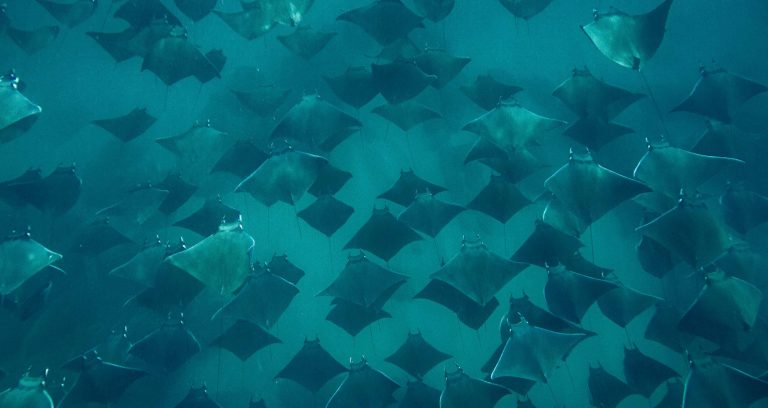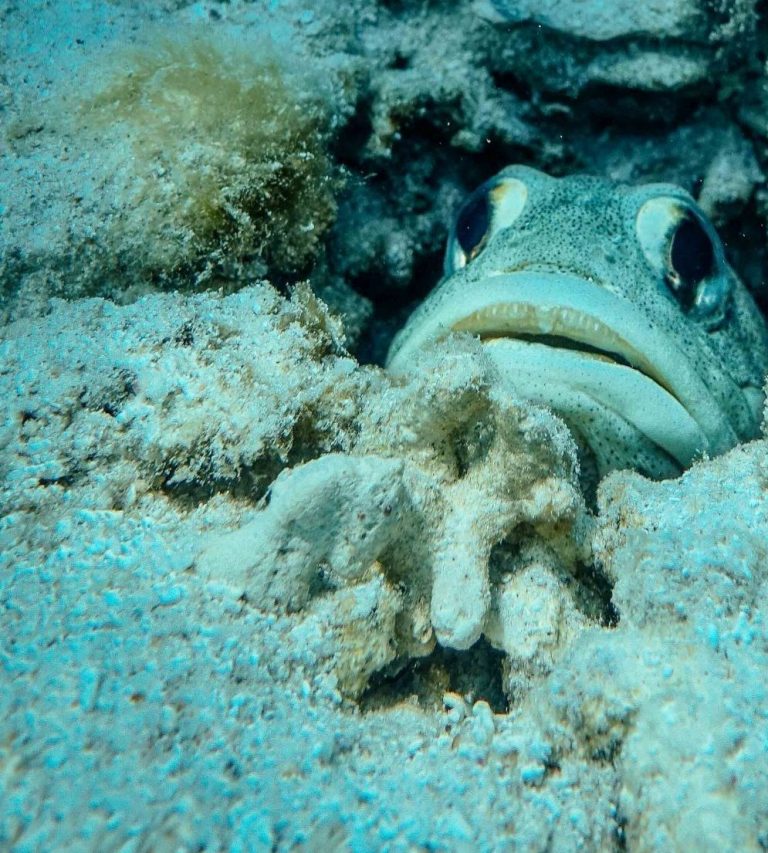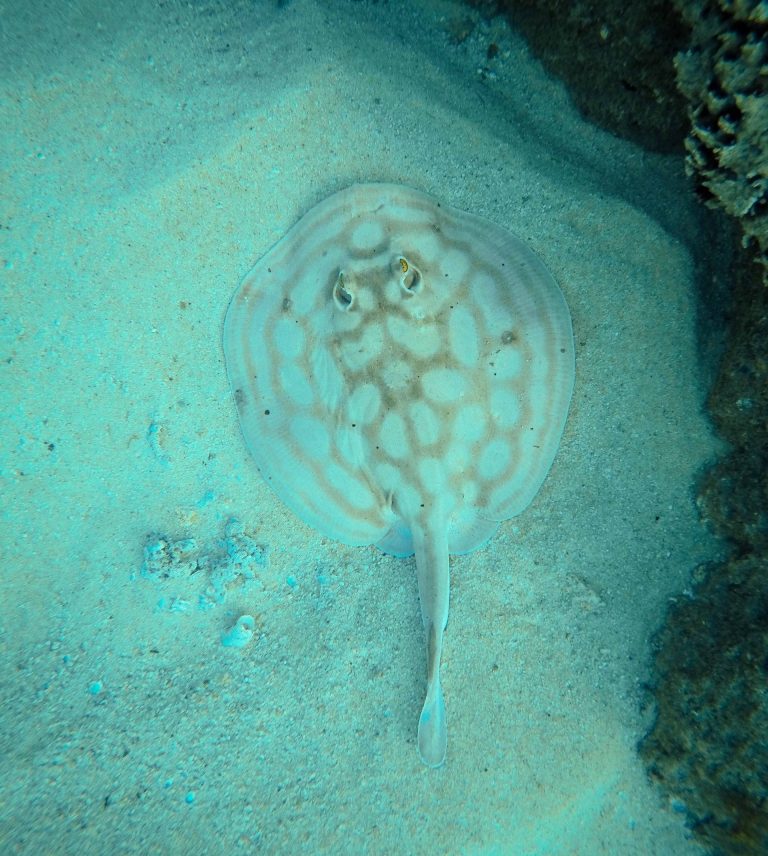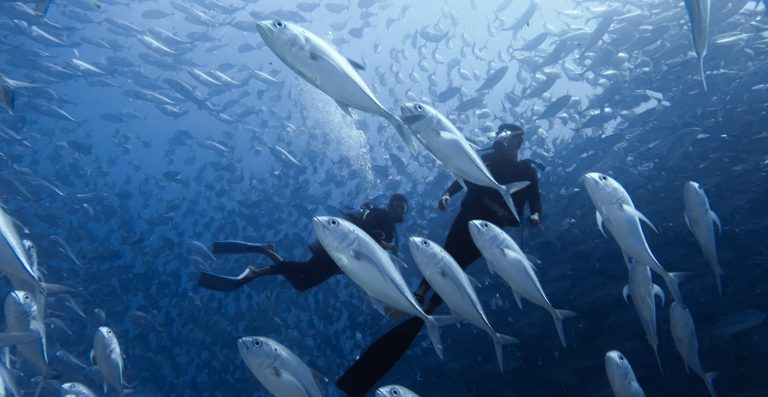Upon reaching the dusty roads of the Baja Peninsula’s Eastern Cape, cell signal is lost – a call from nature that it’s time to shift your attention. The coastline’s mesmerizing shades of blue draw you in, and the pristine beaches evoke feelings of solitude and adventure. It is along this path you can find the tiny town of Cabo Pulmo. Unassuming from land, the area’s main allure lies beneath the water’s surface, where an alternate world full of color and life awaits those willing to tread gently.
At Habitas, we see regenerative business and tourism as vital in today’s world. To build a more equitable and environmentally conscious future, we must go through a shift in thinking and perspective regarding the impact of our lifestyles. In Mexico, Cabo Pulmo National Marine Park is a world-class example of how a local fishing community was able to reimagine their worldview and professions to save an ecosystem – their source of life for generations to come.
In the late eighties and early nineties, the effects of overfishing were rapidly degrading the ocean’s ecosystem in Cabo Pulmo. A fisherman at the time, Mario Castro Lucero recounts, “In Cabo Pulmo, things were getting so bad with the depleted fish stocks that I decided to go to Cabo San Lucas to look for alternative work. There, I got offered the opportunity to become a dive instructor, so I jumped in and gave it my all. Eventually, I went back and shared my knowledge with my siblings and cousins.”
Mario and other fishermen, like his uncle Juan, began to question their impact on the ocean. In their home of Cabo Pulmo, they encountered students and professors from the University of Baja California Sur who explained the importance of fish stock recovery areas and the potential of creating a marine park. The locals then seized the opportunity to take charge of their lives and save their home – even at significant risk. Mario explains, “We realized by ourselves how much we were damaging the ocean as fishermen. We were the top predators in the area. But it was those from the university who helped us see there was another way.”
Alongside family, community members, scientists, and professors, Mario began to lobby the government to create the marine park. It took years and hard work to accomplish, but in 1995, Cabo Pulmo National Marine Park was declared a protected area. Thanks to Mario’s diving knowledge, his family and other community members could transition from fishing to ecotourism. Over the years, the community has prospered while also protecting the ocean and its rich biodiversity.
The conservation efforts of Cabo Pulmo have exceeded all expectations. From 1999 to 2009, the fish biomass in the area increased by an outstanding 400%. The park has become a hot spot for scientists looking to study and preserve a shining star of marine conservation. Dr. James Ketchum is one of them. Co-founder of the non-profit Pelagios Kankujá, he and his team have been studying sharks in Cabo Pulmo as indicators of the ecosystem’s health since 2011.
The scientific research of Pelagios Kankujá goes hand-in-hand with the community. James tells us, “We work with ex-fishermen and their children. They’re the ones who take us out to dive or fish the sharks, meaning capturing them in order to tag and release them. For the locals, it’s part of the transition into the world of conservation. They get to use their knowledge of fishing for research purposes – because sharks are worth more alive.”
While Cabo Pulmo is a success story, it is not free from threats like illegal fishing, development, and over-tourism. In recent years, the park has become saturated with visitors, which could lead to major problems in the near future. Mario explains, “Are we going to wait until the park collapses? If that happens, we’ll have to go somewhere else. I don’t think that’s fair for the community. We fought to make this marine park a reality. Now, the community is organizing themself again to decide their future.”
Development in the area leads to easier access and creates an influx of people that could threaten Cabo Pulmo. To combat this reality, the community together with a coalition of conservation organizations have been developing a holistic, sustainable tourism master plan in recent years. Their objective is to cope with the park’s success and raise the community’s voice to the local government in order to protect the area from major development. Director of Sustentur and an expert in sustainable tourism, Vicente Ferreyra has been facilitating and guiding the coalition’s process by sharing his invaluable know-how on management and planning. Vicente explains, “The vision is to empower the community and to develop a resilient, equitable, and competitive tourism destination.”
If the world is looking for an example of marine conservation, it should look no further than Cabo Pulmo. Its story is one of hope, teaching us that strong conviction and willingness to change is enough to make a difference. While the park, community, and allies face robust challenges moving forward, the deep resolve to keep fighting for future generations remains. Let us all move through life in this courageous way.
Photography courtesy of: Alex Velasco
it’s a pirate’s life
Discover the cultural community center bringing self-expression to Bacalar.





